How to keep users engaged and motivated on their wellness apps? It’s a struggle we’re all too familiar with, isn’t it? You pour your heart and soul into developing a revolutionary fitness app, only to find that users lose interest after a few weeks, or worse, uninstall it altogether.
Contents:
If you’re tired of watching your user retention rates plummet and your application languishing in the depths of app stores, then you’ve come to the right place. In this article, we’ll dive deep into the world of fitness app gamification, uncovering its incredible potential to revolutionize the way users interact with your product. Whether you’re a budding startup looking to make a splash in the fitness industry or a seasoned product owner seeking to breathe new life into your product, this is your roadmap to success.
What a person who buys a fitness app wants
The app that turns exercise into fun will always win over others. Don’t forget that 73% of people who set fitness resolutions end up quitting before hitting their targets. The only aim that a user has when they browse for a fitness app in the App Store or Google Play is the desire for a beautiful, athletic body. This is the ultimate goal. So, if you can get people over their laziness with the right approach and your app – it will succeed.
It’s almost an unbelievable thing for a person to stick to their sports routine without giving up on day three. What helps them to keep being fit is an easy and playful presentation of exercises that instantly engages and, most importantly, does not give a chance to give up.
.

Healthy Habits app by Shakuro
Fitness & wellness app market
73% of people who set fitness resolutions end up quitting before hitting their targets. The only aim that a user has when they browse for a fitness app in the App Store or Google Play is the desire for a beautiful, athletic body. This is the ultimate goal. So, if you can get people over their laziness with the right approach and your app – it will succeed. But what’s the right approach?
The top mobile fitness and workout applications have around 21 million downloads worldwide this year, so it is challenging to get to the top of the huge list. Here are the statistics for both Google Play and Apple App Store:
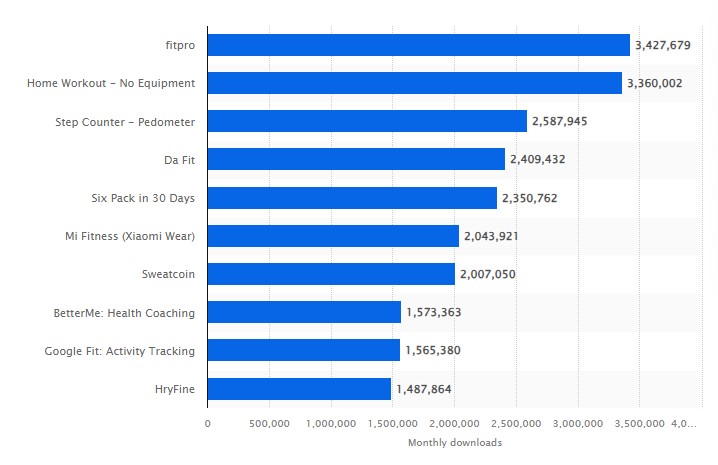
The fitness apps industry is expected to generate $5 billion in revenue this year. In terms of worldwide revenue, the United States will produce the most ($1,506.00m in 2023).
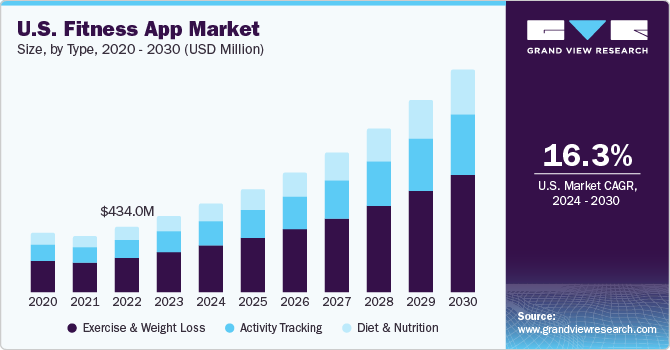
We can see that most leaders are old-timers and are fairly classic in their approach. They are built on the basic concepts of counting calories, illustrating exercises, and timing everything out.
However, if you release a standard application that will count calories, connect with your wearable devices, and configure functions such as Apple Health, this is a completely different story. There are too many of them already – go through the health and fitness category in the app list, and you find thousands. This fact creates a problem of promotion for any app that is not truly fresh.
A wellness application should provide full user involvement in the process and an easy, positive emotional background so that its user wants to perform exercises regularly. So, app gamification is an involving factor and will become one of the main trends in future years.
App gamification market depth
People are interested in the topic, and they are searching the App Store and Google Play for such apps. It would seem there is no better opportunity than creating an application that both motivates you to do exercises and is entertaining at the same time. Nevertheless, because of the abundance of classic fitness applications, gamification just gets lost in hundreds of other development options.
Also, surprisingly, many applications of this kind have very low ratings and few downloads, and in general, the popularity of these applications does not amaze. To date, the amount of motivating, well-thought-out fitness applications with elements of gamification is low. Most likely, this is so because creating an application based on gamification requires much more investment and resources than creating a classic application with calorie counting. A classic app requires just a shell of a new modern design.
Is it too late to start wellness app development with gamification? Analyzing and predicting the market, consider these points:
- Penetration of smartphones
- Obesity and overweight among potential users
- Download trends for fitness apps
The penetration of smartphones and the number of mobile subscriptions are constantly increasing – around 6.5 billion worldwide. Users want healthcare solutions right on their smartphones. Smartphone fitness solutions are irreplaceable for those who got used to home workouts. Potential users appreciate the ease and cheapness of training with fitness apps. Some people aren’t planning to get back to gyms. Gamification can make their home workouts more engaging and help to stick to physical activities.
Obesity and overweight are significant factors. Roughly 42% of adults in the US have obesity. And this number can increase twice by 2030. It made the Health & Fitness category in the App Store one of the most competitive. These facts are enabling even greater use of fitness apps in the future. And what about gamified fitness apps as a possible solution to the problem? It appears to be a good way for users suffering from obesity. And it is a promising business opportunity, judging by the fitness app market movement:
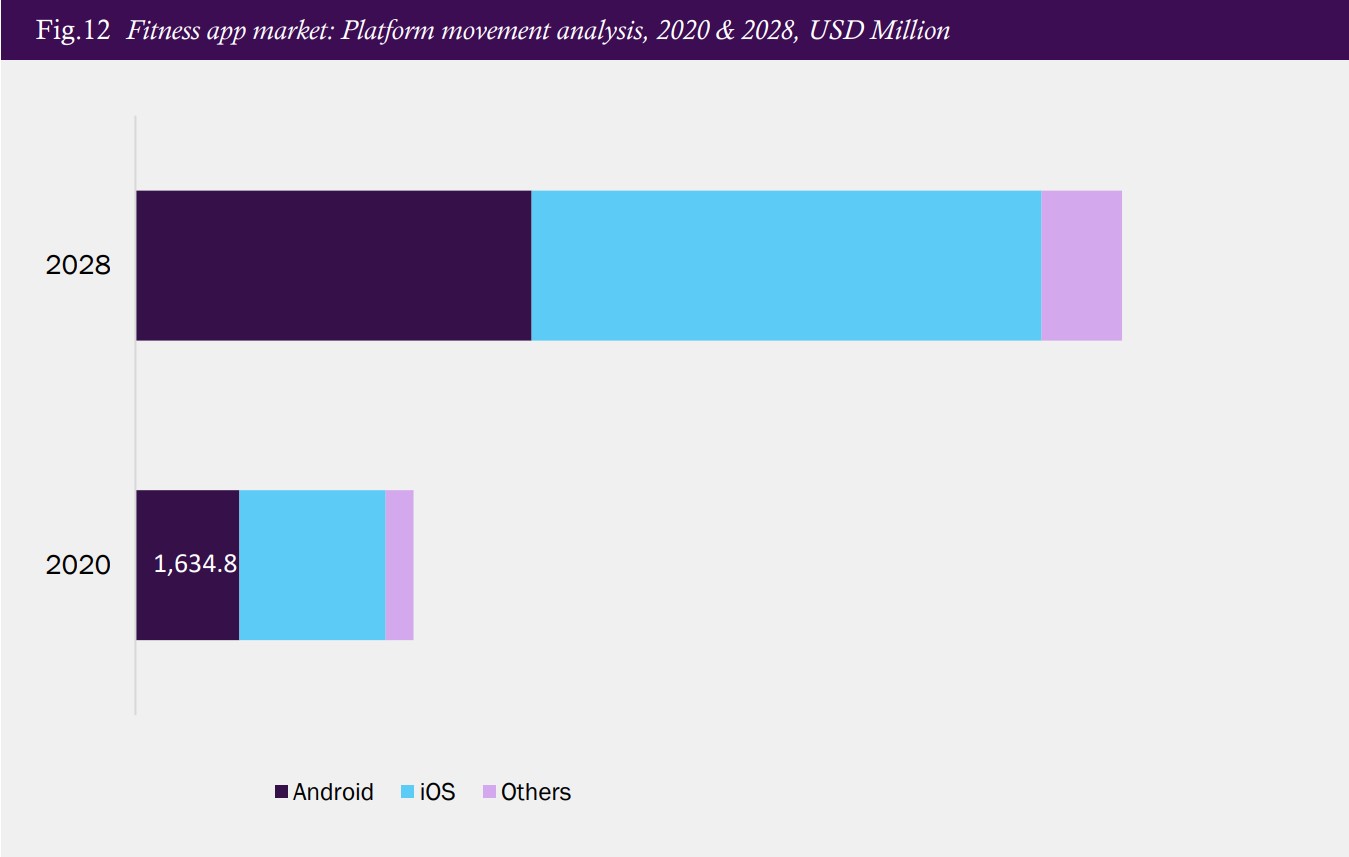
Download trends for fitness apps. The number of US fitness app users increased to 86 million. People can’t imagine their lives without physical activity tracking. This addiction grows according to market study data. Fitness apps and devices are the best companions for such a lifestyle.
Gamification can only raise the app’s value for users and add plenty of joy to daily physical activity. These facts take a strong place in building predictions for gamified fitness app success.
Why do you need to implement app gamification?
Most of the users are tired of classic fitness coach app ideas and looking for something that will motivate them more. Games are one of the basic forms to engage people in various activities since childhood.
Do you remember the PokemonGo app? This was the first ultra-popular step-counting game, one of the best gamification apps in 2016, where users were required to walk a lot to win. From that day, the idea of a similar and functional concept has been getting ever stronger.
52.5% of App Store fitness apps contain at least one element of gamification. But there are no fully gamified apps at the top of this leaderboard. And this is a chance for startups like you who want to develop a product that motivates people.
Why not create a classic application, like Nike Run Club, and try to repeat its success? The market for track running apps is difficult to succeed in, as the top competitors have taken the niche so strongly, and their positions seem carved in stone.
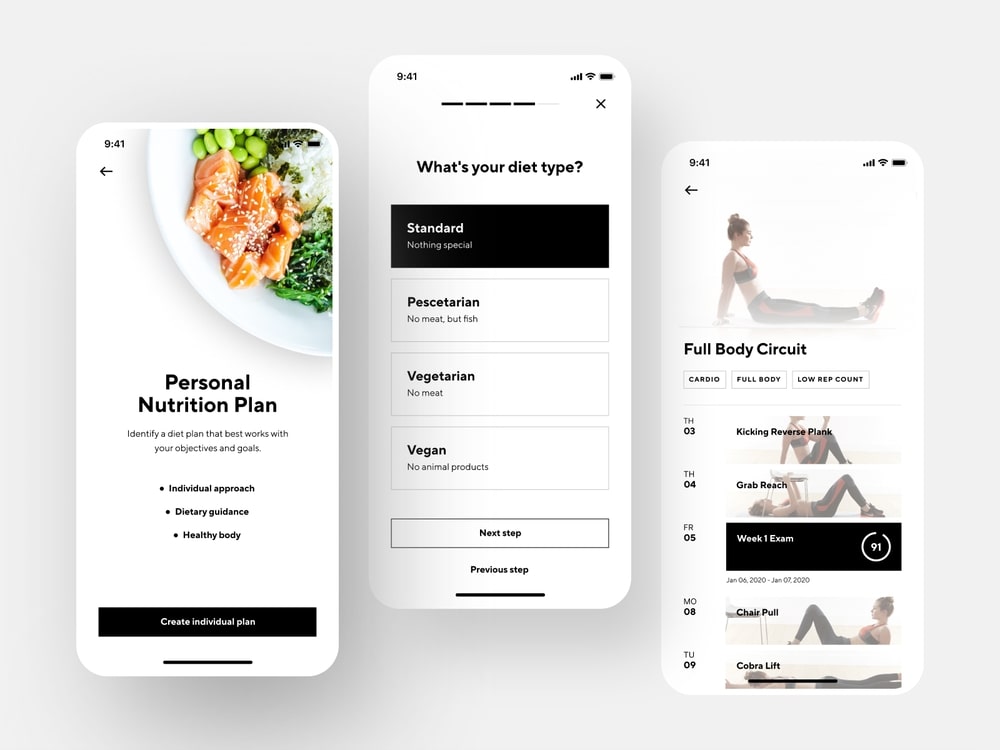
Classic fitness app by Shakuro
It is much more difficult to persuade a user to swap an app they’ve already got used to for a new one that is almost the same. Better to create something new, exclusive, entertaining, and challenging. That is why app gamification as a trend can be a key to success.
Types of gamification in fitness & wellness apps
There are many ways to turn serious physical activity into fun with a gamified plot and UI.
An example from the first hands – Fit for Bucks. It is a mobile application that allows consumers to swap their daily step counts for merchandise from local retailers. The concept is deeply integrated with wearables and aimed at helping local business owners build better conversion while promoting physical activity among people.
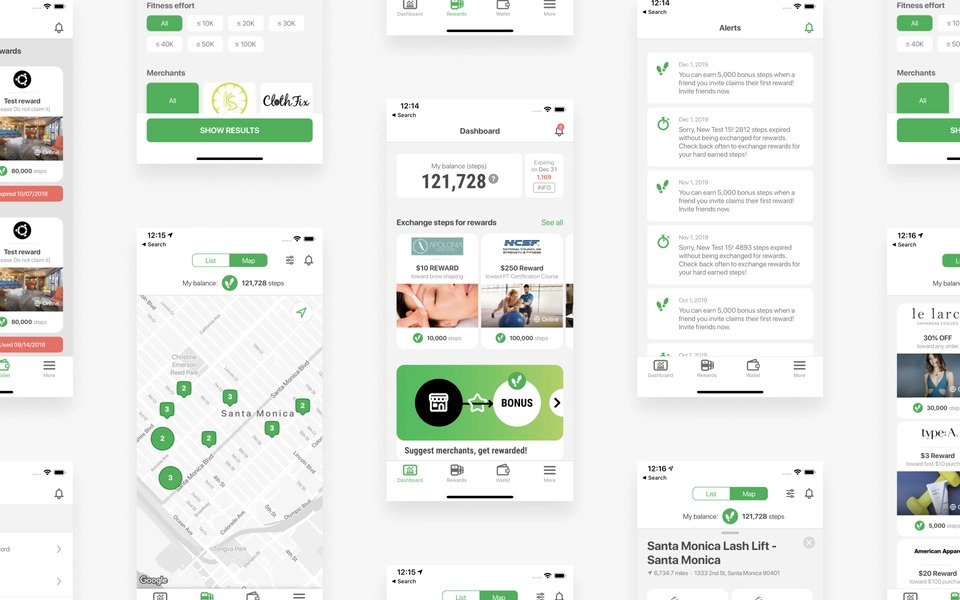
Fit for Bucks case by Shakuro
This is a common concept when gamified applications use your phone and wearables to track your physical activity. PlayFit, for example, has a pedometer, squat, and push-up counters.
It’s possible to make your workouts more enjoyable by tracking all these motions. You climb up to new activities and win rewards as you complete daily and weekly targets. At the same time, you become fitter and fitter. This is a deep psychological effect based on the motivation of immediate rewards. What can be more effective for a user? Let’s look at two other classic types of app gamification.
Structural app gamification
This type uses game components to guide a user through content, with no adjustments or alterations to the content itself. The goal of this sort of gamification is to keep the user engaged by rewarding them as they progress directly through the plot of the app.
Allowing learners to earn points for watching an instructional video is an example of this form of gamification in e-learning. And for a fitness app, it is even simpler: a user completes one exercise to unlock the next one, for example.
There are some common components to this type of gamification:
- Achievements. A classical component of games – something that is earned after passing tasks.
- Points. Getting points for any activity, like watching a video or completing an exercise.
- Ranks and leaderboards. One of the greatest motivations to continue is to get a higher rank among other users.
- Levels. As players move through the content, it continues to build on the previous concepts.
- Peers. This is an external component, but very strong. Social achievement is part of gamification. Gaming makes exercise addictive, as does social attention.
Content app gamification
Content gamification involves the integration of game elements into the actual content within an app. Unlike the structural type, this one alters the content to make it more game-like and engaging.
It is particularly effective in educational apps and e-learning platforms, where it transforms traditional lessons into interactive and immersive experiences.
Here are several options you can consider:
- Challenges. The users compete against each other to complete a certain challenge, like running a few kilometers as fast as possible.
- Interactive scenarios. Create branching scenarios where learners make decisions, and their choices impact the outcome.
- Quizzes and puzzles. Engage people with fact-checking or mind-twisting questions.
- Simulations. Develop realistic simulations that allow users to practice skills or scenarios in a safe, virtual environment with AR or VR.
7 best fitness apps with game elements in the App Store
What is the main motivational concept of these free gamified apps? Let’s look through the most engaging applications. Paying attention to fun elements, gamification components, and health behavior constructs, here are seven app gamification examples.
We’ve decided to divide the list according to the types of gamification.
AR apps — augmented reality fitness
Plaicise — this application transforms workouts into an augmented reality game. You stand in front of your smartphone with a front camera, and the AI translates gestures into game controls on the screen. One of the greatest things about this application is that users can play online with friends and train together.
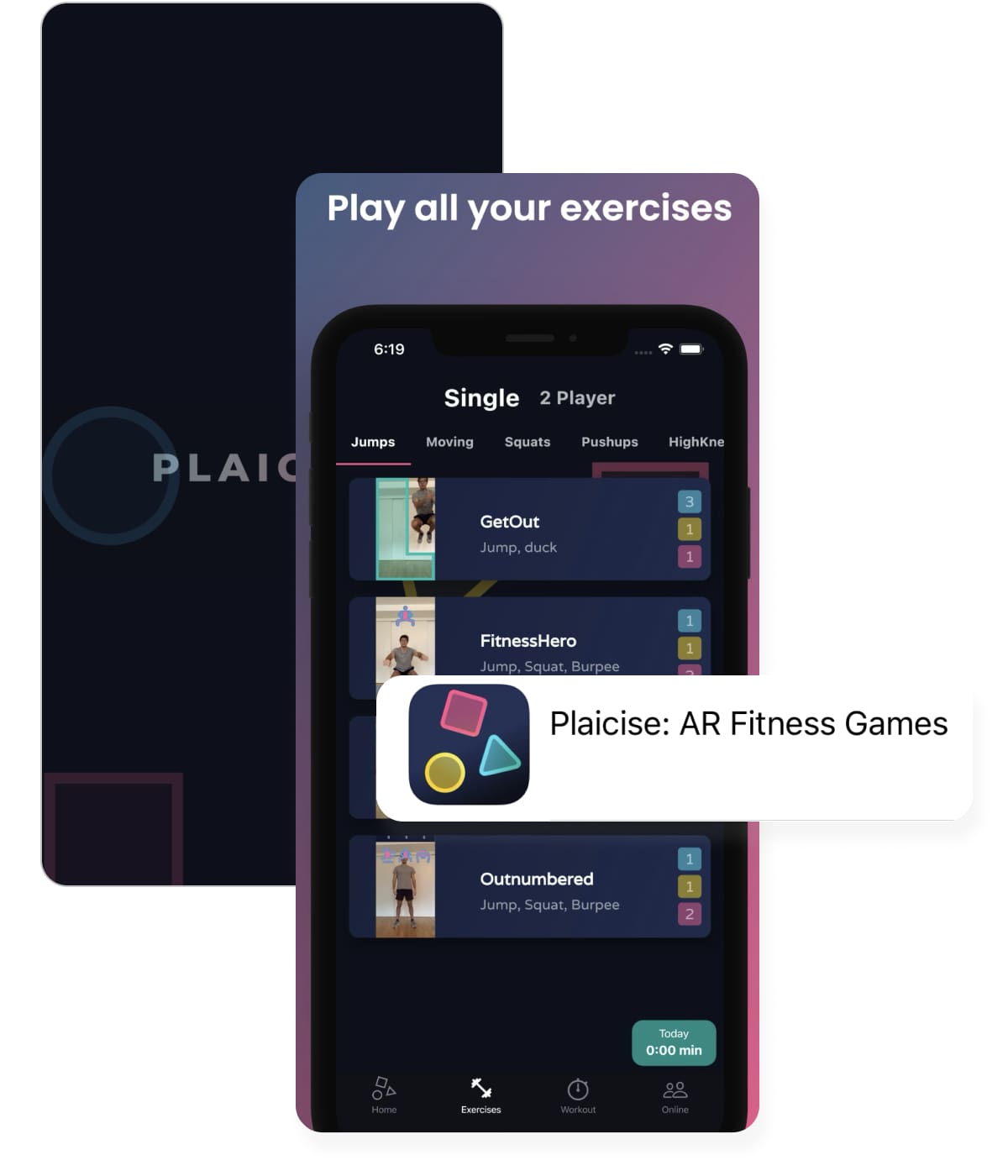 Simulation fitness app gamification
Simulation fitness app gamification
Galaxy Fit — it motivates users to stand up from the office table and exercise for a little while having major health benefits. The simulation on display shows the player’s moves. The galactic ship moves through the universe accordingly, calories burn – that’s so easy.
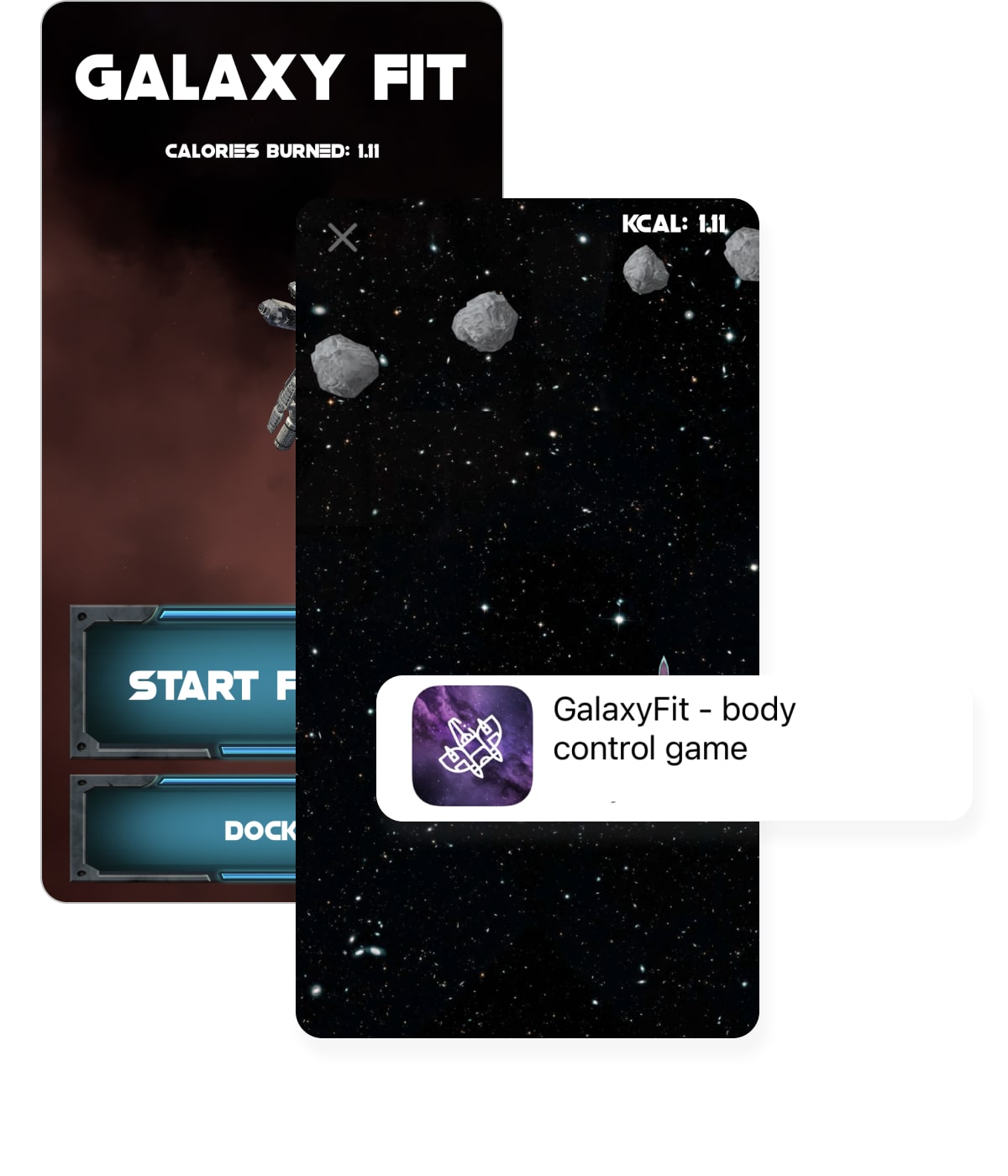 Burn your fat with me — this is an anime-inspired wellness app and at the same time a dating simulator. It uses the concept of “moé” — a Japanese term for the feeling you get when you see a cute female anime character to motivate players to keep doing exercises. The user is “seduced” into doing all the exercises along with the main character.
Burn your fat with me — this is an anime-inspired wellness app and at the same time a dating simulator. It uses the concept of “moé” — a Japanese term for the feeling you get when you see a cute female anime character to motivate players to keep doing exercises. The user is “seduced” into doing all the exercises along with the main character.
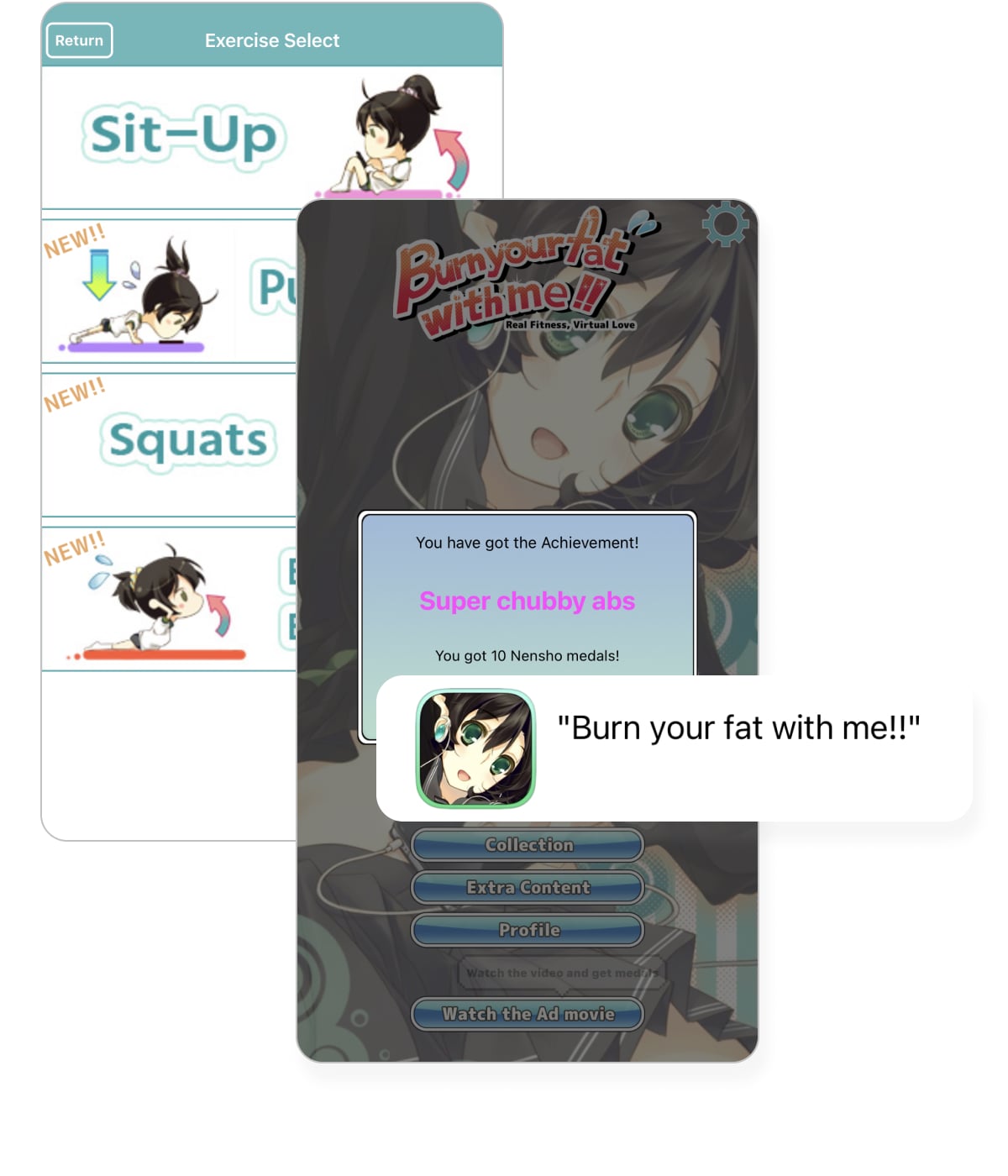 ZRX: Zombies Run — it is a fully immersive audio app that tracks running and imitates monsters following the user. Every jogging session is a mission thanks to the audio drama that has been written by professional writers and composers. Moreover, this is one of the best apps for running because it motivates to train even more, as the player should get “supplies” on the way to survive.
ZRX: Zombies Run — it is a fully immersive audio app that tracks running and imitates monsters following the user. Every jogging session is a mission thanks to the audio drama that has been written by professional writers and composers. Moreover, this is one of the best apps for running because it motivates to train even more, as the player should get “supplies” on the way to survive.
Pedometer — just like in best running apps
Wokamon — this is a classic adventure simulation game that makes walking exciting and motivates you with an engaging story. It has a simple and highly motivational concept.
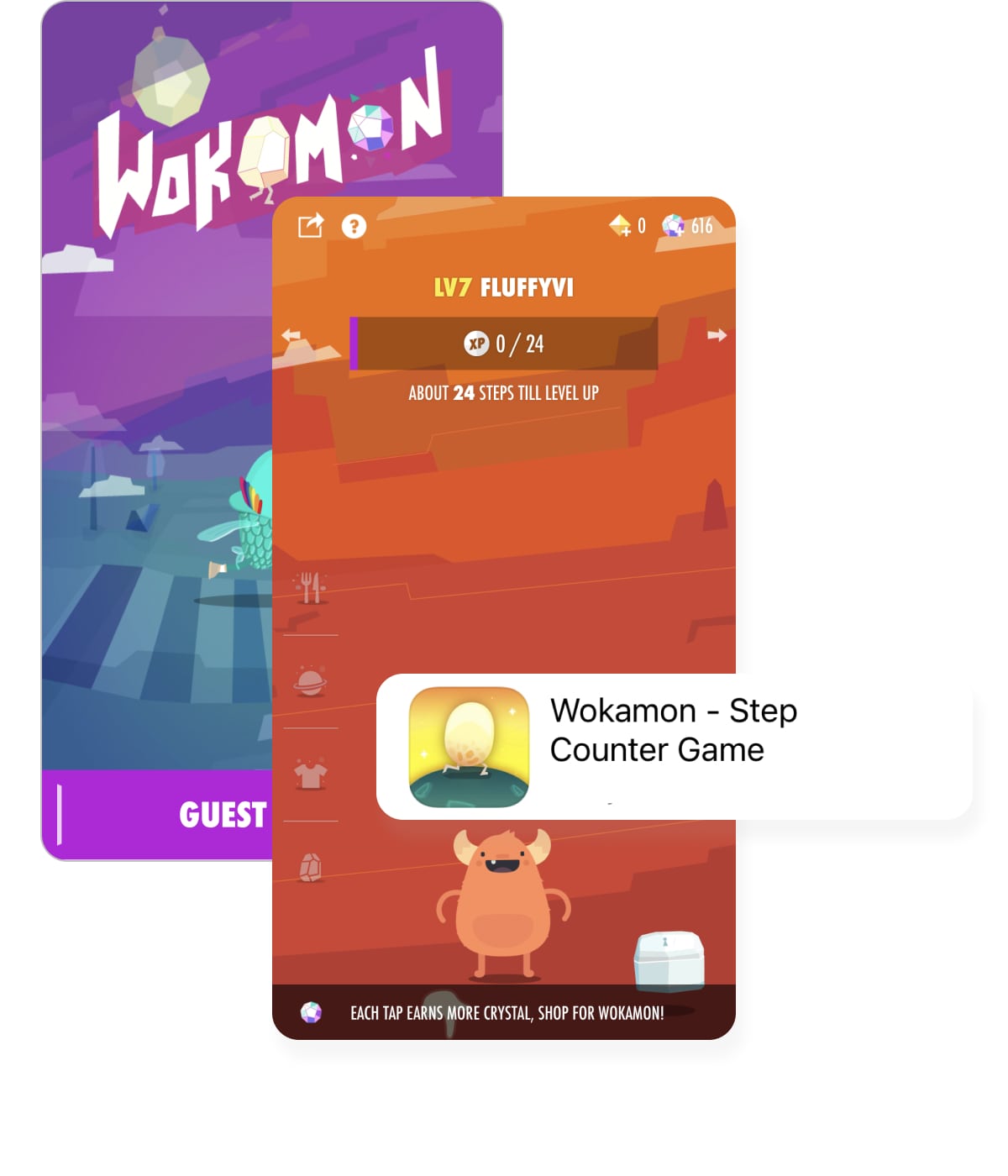 Walkr — this is one more step counter app that motivates users to walk a lot for exploring the infinite space. It offers various challenges, missions, and socialization. 500,000 users tried this app already.
Walkr — this is one more step counter app that motivates users to walk a lot for exploring the infinite space. It offers various challenges, missions, and socialization. 500,000 users tried this app already.
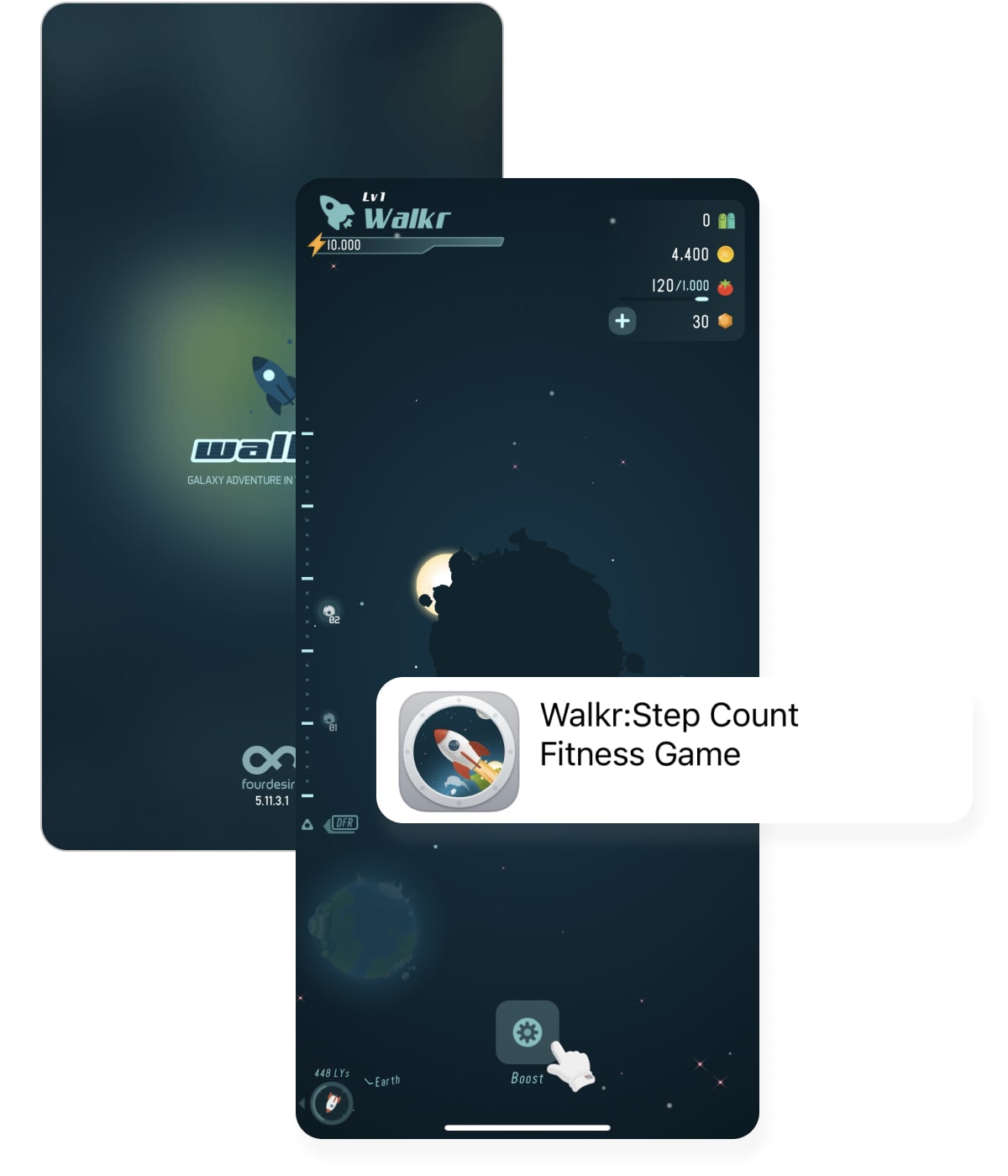
Conclusion
With the increasing obesity rate and remote jobs, people are looking for a solution to take care of their bodies. They want to become fit, lose weight, or gain muscles. Fitness mobile apps are the easiest way to achieve those goals. And you can be the one providing that application.
Before developing the product, you need to research the latest trends, potential competitors, and target audience. Using a thorough approach, you will be able to develop a complex application that corresponds to the users’ requirements.
So, if you want to create a functional wellness app with gamification, take your chance and contact us. Let’s work together to build a product that helps both your business and clients.
The article was originally published in July 2021 and was updated in January 2024 to make it more relevant and comprehensive.
